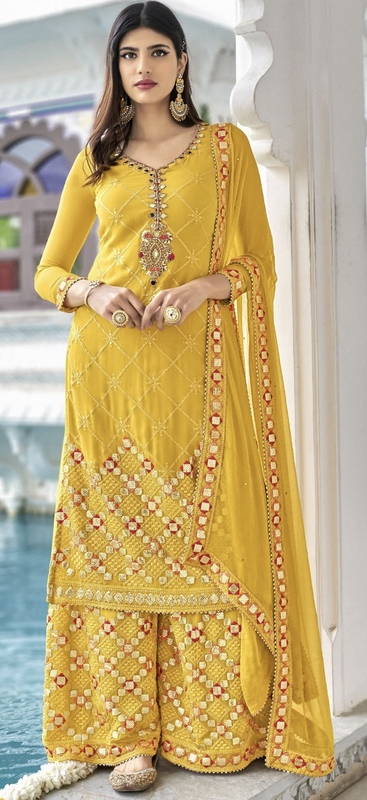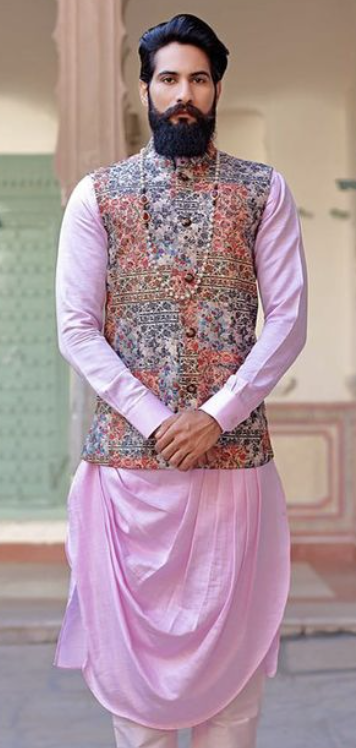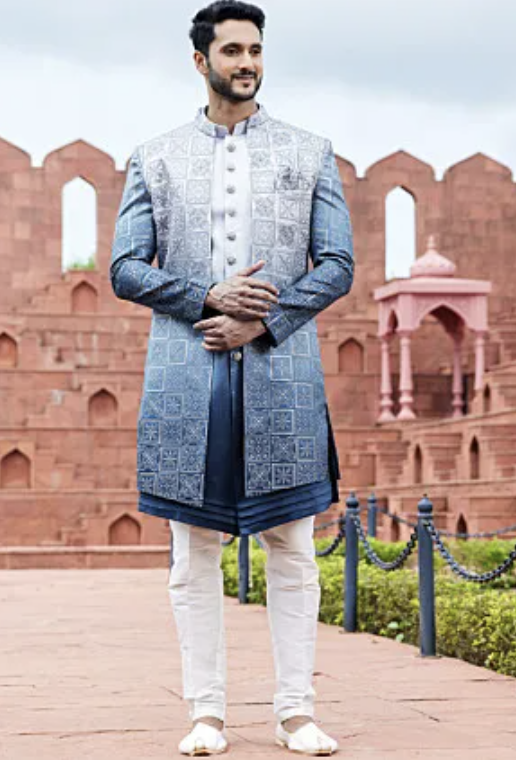| About Us | FAQs | What To Wear | Schedule | Travel | RSVP | Registry |
Big picture: yes, we are asking guests to wear Indian-style attire, if they feel comfortable doing so, and yes, we understand that they may *not* feel comfortable doing so because they have no intuitive sense of situationally appropriate fashion. Enter: this guide.
As with American clothing, dress codes are really based on tiers of formality. As with American clothing, what determines "formality" isn't necessarily the type of item itself* but its fabric, construction, details, embellishments, etc. (see: the difference between sweatpants and tuxedo pants).
*Yes, I am largely ignoring the entire concept of "black tie/white tie", as I typically do when I receive an invitation with that dress code.
There are many different sub-styles of salwar kameez (literally: "loose trousers and long tunic"), such as anarkali, sharara, and palazzo suits, and they all include a dupatta that can be used as a head covering. There are tons of videos out there on how to style a dupatta like a pro, though it might obliterate your TikTok algorithm. Indowestern is another sort of explicitly fusion designation of salwar--I think it's sort of a catch-all for silhouettes and patterns that have emerged due to Western influences (although one has to wonder where "palazzo" came from).

A lehenga (pronounced "leng-uh" by North Indians and "le-heng-uh" by South Indians as far as I can tell) is a full skirt, often worn with a choli (fitted blouse) and of course a dupatta.



These will be less formal versions of the same items.
The Anand Karaj will be in a gurdwara (Sikh place of worship, "home of the guru") and attire that covers the shoulders and legs is expected. A cloth head covering (i.e. not a hat) is mandatory to show respect inside the gurdwara. Vibrant colors are standard, and solid black/solid white should both be avoided (aside from being boring, they're considered bad juju at a wedding). Some people stay away from red as well since that is the bridal color.
We welcome and encourage you to wear garments in the traditional Indian style (which implies bright colors!). An appropriate ensemble would be a salwar kameez, kurta, or sherwani. A kurta or sherwani is typically worn with a simple head covering called a patka that is similar to a kerchief or bandana, and these will be provided for wedding guests at the gurdwara.
Footwear is according to individual preference. Consider that you will need to remove your shoes upon entry into the gurdwara, if that impacts your decision making.
If none of these options appeals to you, business casual attire with the above considerations in mind will also be appropriate. Think "fun business casual," the celebrated dress code of golf tournaments.

For the reception, guests may choose to wear fancier salwar kameezes, saris, lehengas, or American-style formal wear.
To emphasize: this is a bright and celebratory occasion, and we can't wait to see your beautiful selves in your most radiant getups! And this may go without saying but ... check the weather forecast. Even LA isn't exempt from global warming.
Here are some websites that offer these outfits at a variety of price points. Note: pay attention to the stitching options so you don't inadvertently order fabric that hasn't been sewn together! Also be aware that turnaround times are often a month or longer, so you'll want to plan ahead.
I am still new at this, so if you see any misinformation or want to offer corrections/additional context, I welcome that discussion. Alternatively, if you would like confirmation that you are choosing an appropriate outfit feel free to reach out to us.
Still have a question? Other people probably have the same one.